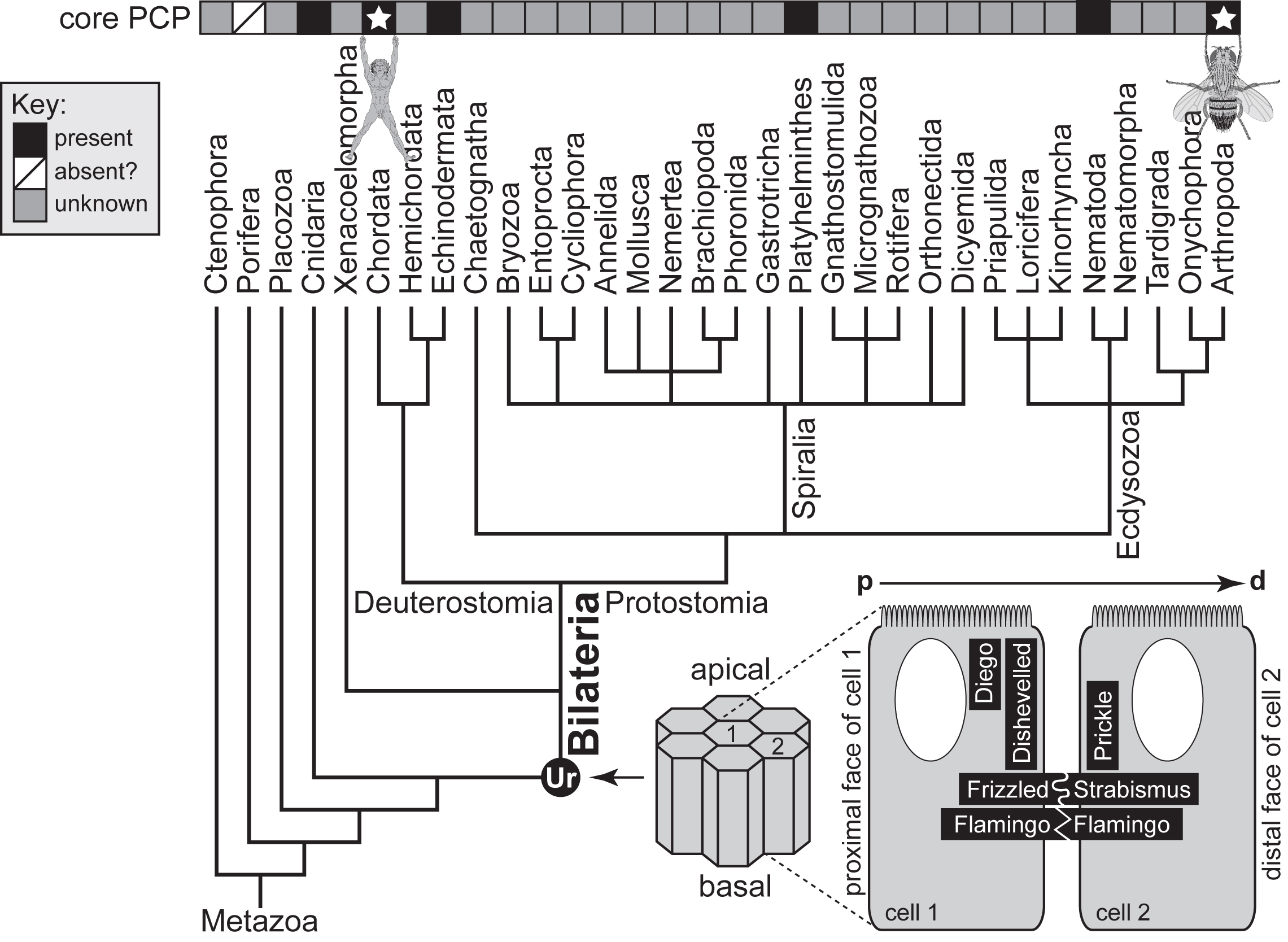

Deep Homology?
  |
Deep Homology? |
 Common usage of the core planar cell polarity (PCP) pathway among animal phyla. Compiled here are the results of a 2015 review by Rosalind Hale and David Strutt entitled "Conservation of planar polarity pathway function across the animal kingdom." The core PCP cassette was first studied in flies and later found to act likewise in mammals. The pathway has been documented in only a few phyla aside from arthropods and chordates, but there is at least one phylum from each trunk of the bilaterian tree (Deuterostomia, Spiralia, and Ecdysozoa), so the module likely dates back to stem bilaterians. On the other hand, the distribution of the non-core Fat-Ds-Fj pathway is too poorly sampled to warrant plotting here. The six proteins of the core PCP pathway are cartooned (lower right) as black rectangles, with intracellular (heteromeric) binding denoted by adjacency and intercellular (ligand-receptor) binding denoted by jigsaw-puzzle complementarity. In the fly wing, where PCP circuitry has been thoroughly analyzed, each protein localizes to the proximal (p) or distal (d) side of each cell. Three of the proteins span the membrane and bind proteins on adjacent cells: Frizzled binds Strabismus, while Flamingo binds another Flamingo. The other three are internal: Dishevelled and Diego localize to the distal face, while Prickle resides on the proximal face. (Only one set of proteins at the interface are drawn for clarity.) Vertebrate homologs of Frizzled and Prickle bear the same names as in flies, but names differ for Diego (Diversin), Dishevelled (Dvl), Flamingo (Celsr), and Vang (Vangl). Overall this cassette allows epithelial cells to align along an axis in response to a global cue, which is often a Wnt signal, depending on the tissue. |
|
Introduction: cover image Body axes: figure 2 | figure 3 | figure 4 | figure 5 | figure 6 Nervous system: figure 7 | figure 8 Vision: figure 9 | figure 10 | figure 11 | figure 12 | figure 13 Touch and hearing: figure 14 | figure 15 Smell and taste: figure 16 Limbs: figure 17 Epilogue: figure 18 The Interactive Fly resides on the web server of the Society for Developmental Biology. |